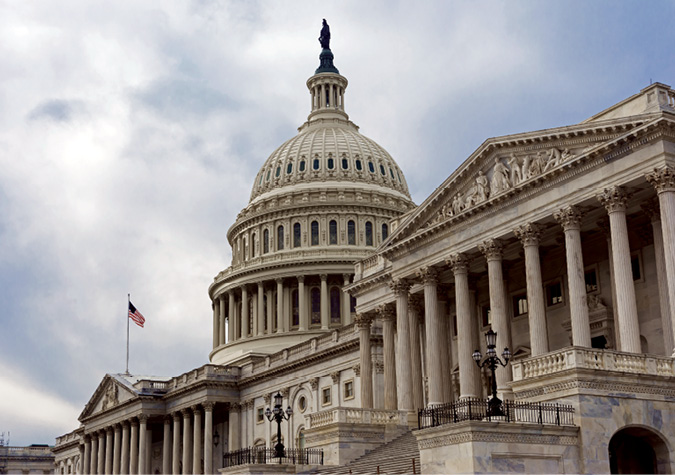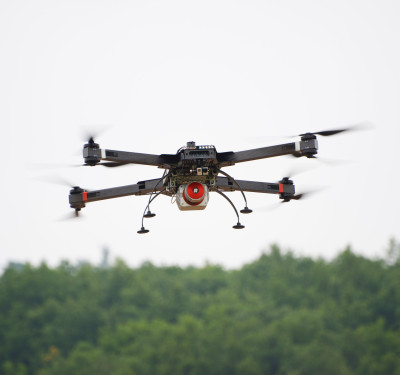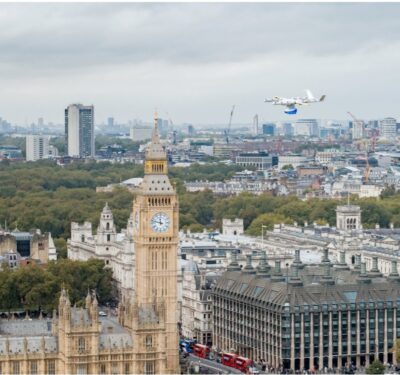Just before the holidays, the phones started ringing. First a few, then dozens of calls from lawmakers, reporters and concerned citizens. Everyone had the same question: “What’s flying over New Jersey?”

Reports of mysterious “drone sightings” captured public imagination and stirred unease. Were the drones real? Hobbyists? Something more sinister? As it turns out, it was a mix of misidentifications, deceptive viral clips, legitimate and routine drone activity, and a whole lot of uncertainty.
But the bigger story was hiding in plain sight: we’re still flying blind when it comes to tracking and identifying aircraft, uncrewed or otherwise, in low-altitude airspace.
And it’s not just New Jersey. Reports of unauthorized drone activity near military installations have become frequent enough to demand national attention. Just recently, “60 Minutes” aired a segment focused entirely on these incursions. That alone should be a wake-up call.
While the drone industry continues to grow, improving efficiency, safety and connectivity across nearly every sector, our policy framework hasn’t kept pace with the evolving threat landscape. It is past time to address these shortcomings.

OUTDATED SYSTEMS, MODERN CHALLENGES
Let’s be clear: The overwhelming majority of drone operations in the U.S. are safe, legal and beneficial. AUVSI members and their customers represent responsible, forward-leaning use of drone technology. Remote ID, a digital license plate for drones, is already live, and legitimate operators are compliant.
But enforcement and accountability are still major roadblocks. Remote ID compliance is still less than 50%, and bad actors aren’t going to voluntarily announce their presence. At the same time, the federal government continues to invest billions into outdated radar and communications systems, many of which are well beyond their intended lifespan, that are designed only for higher-altitude traditional aircraft, not agile, small drones flying below 400 feet.
Today, more than 90% of the FAA’s air traffic facilities and maintenance budget goes to sustaining legacy systems, leaving little room for investment into innovative airspace awareness tools. The result? No reliable nationwide infrastructure for tracking and identifying low-altitude drone activity.
A CASE STUDY IN READINESS: THE NAS IS BEHIND THE CURVE
Air Traffic Control (ATC) modernization is one part of this larger readiness equation. A bold new proposal from U.S. Transportation Secretary Sean Duffy lays out a plan to deploy a “world-class ATC system” within just three years. It’s a vision built on automation, digital communications, real-time surveillance, and low-altitude tracking, capabilities that are essential for a future where crewed and uncrewed aircraft share the skies. This is a welcome and bold step forward.

But modernizing ATC alone isn’t enough. When it comes to integrating drones into the National Airspace System (NAS), the biggest challenge isn’t technological, it’s regulatory. The systems, tools and platforms that can identify and safely manage uncrewed traffic at scale already exist. What we lack is a regulatory framework that enables their use.
To truly prepare the NAS for drones and other emerging aviation technologies, we need a regulatory system that moves at the speed of innovation. That means finalizing long-delayed rules, including the Section 2209 designation of critical infrastructure and a comprehensive BVLOS framework. Accompanying BVLOS will be broad employment of UAS Traffic Management (UTM) strategic deconfliction tools providing unparalleled airspace awareness, enabling real-time tracking, coordination, and deconfliction of low-altitude drone operations without burdening traditional air traffic control.
Further, UAS Detection and Mitigation laws have not been updated since 2018. That gap must be addressed this year by this Congress. Additionally, Remote ID enforcement needs to become a national priority. Together, safety rules like BVLOS and software tools like UTM, aligned Remote ID, 2209, and updated UAS Detection and Mitigation laws will move safety and security forward together.
At AUVSI, we view this moment as a critical inflection point. With the right policies in place to drive NAS modernization and unlock long overdue rules, we can unlock the full promise of UAS: from large-scale BVLOS operations to real-time airspace deconfliction and counter-UAS capabilities at the local level.
TIME TO LEAD
The UAS and counter UAS (CUAS) industry is ready to be part of the solution. We’re not waiting for a crisis to act; we’re waiting for the authority to operate. The technology is here. The expertise is in place. What’s missing is a policy framework that empowers responsible innovation while closing the gaps that bad actors exploit. The longer we wait, the more we risk falling behind on security, on competitiveness, and on public trust.
With smart policymaking, sustained leadership, and a willingness to adapt legacy systems to meet modern needs, we can create a safe, secure and dynamic airspace that supports both innovation and national security.
Let’s build a regulatory system that matches the pace of innovation and ensures America leads in the skies—not just in capability, but in confidence






